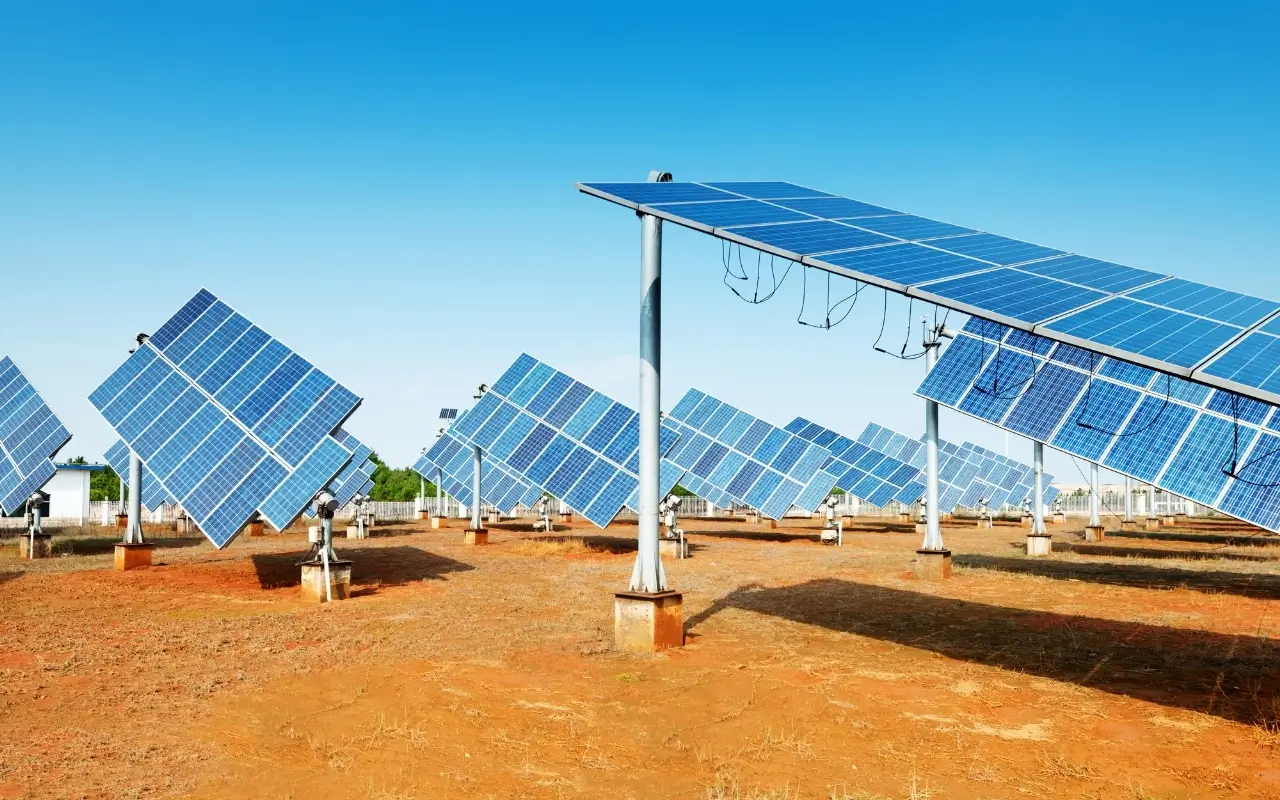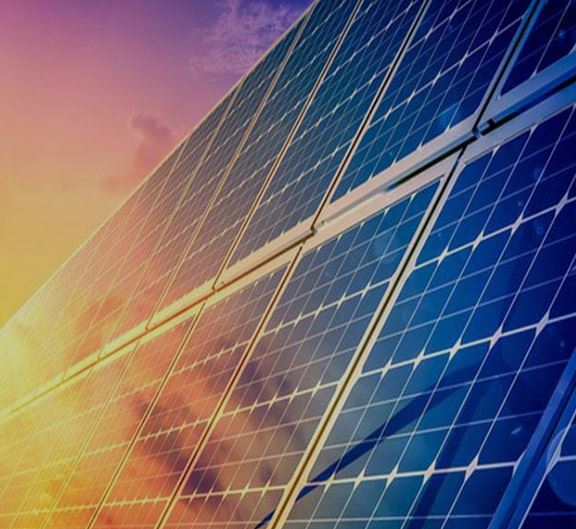Solar tracking systems are technological solutions that increase the amount of energy obtained from the sun by ensuring that solar panels stand at the most efficient angle towards the sun. These systems are automatically orientated according to the position of the Sun throughout the day to capture the sun's rays more effectively. Compared to static panels, solar tracking systems significantly increase energy production as they ensure that the panels are constantly at the ideal angle. In this way, the return on investment period is shortened and energy efficiency is maximised.
Solar tracking systems are generally available in two different types, single-axis or dual-axis. Single-axis systems move in only one direction (usually east-west), while dual-axis systems have the ability to move in both horizontal and vertical axis. Thanks to this dual movement capability, dual-axis systems provide the highest energy efficiency by capturing the sun's rays more efficiently. Both types of systems can be preferred in solar energy projects according to cost, location conditions and expected energy needs. The installation and maintenance of these systems are constantly evolving and becoming more accessible depending on technological developments.
Solar Tracking System Features
The Solar Tracking System revolutionises sustainable energy solutions by maximising the efficiency of your photovoltaic panel layout. This system continuously monitors the position of the sun throughout the year so that the panels always benefit from sunlight at the ideal angle. Thanks to this technology, energy production increases significantly, while your investment costs are quickly amortised. This system, which can follow the sun's path without interruption, works actively around the clock to maximise energy production.
Highlights of the Solar Tracking System:
-
Increase in Energy Production: Increases annual energy production by up to 25%, resulting in a shorter return on investment.
-
Balanced Design: Thanks to its innovative and balanced design, the strain and torque values reflected on the system are minimised.
-
Automatic Adjustment: Automatically follows the position of the sun throughout the day and no additional adjustment is required.
-
Efficient Actuators: Maximises output torque, allowing a greater number of panels to be guided efficiently.
-
Intelligent Feedback System: With data from sensors and transducers, it continuously optimises the tracking angle and thus increases energy production.
This innovative system offers ecological and economic benefits by increasing your capacity to utilise solar energy. With its advanced tracking mechanism, it makes it easier for you to achieve your sustainable energy goals.
What is Solar Tracking System? How Much Benefit Does It Provide?

A solar tracking system is a mechanism that automatically adjusts the solar panels according to the position of the Sun throughout the day to maximise the use of sunlight. Unlike fixed panels, these systems follow the movement of the Sun so that the panels always receive sunlight at the ideal angle. This feature increases the amount of energy the panels receive from the sun and therefore maximises the amount of electricity generated. Solar tracking systems offer both environmental and economic benefits by increasing energy efficiency.
This increase in energy production is one of the biggest advantages of using solar tracking systems. Research shows that compared to fixed panels, solar tracking systems can increase energy production by 20 to 40 per cent. This rate may vary depending on the geography and climatic conditions where the systems are located. In regions with intense sunlight, the benefits of solar tracking systems become even more evident. These systems significantly increase energy efficiency thanks to their optimal energy collection capacity at different times of the day.
Although investment costs are initially high, the long-term savings of solar tracking systems offset these costs. Increased energy efficiency leads to significant reductions in energy costs, which shortens the payback period of the project. In addition, the maintenance requirements of these systems are decreasing with the development of technology and becoming more user-friendly. The use of solar tracking systems stands out as a sustainable and economical energy solution.
Solar Tracking System Usage Areas
Solar tracking systems have an important place among technological solutions that increase the efficiency of solar energy production. These systems enable solar panels to continuously follow the sun, maximising energy production. Compared to conventional fixed panels, solar tracking systems allow the panels to be exposed to more sunlight and thus significantly increase energy efficiency. This technology is indispensable especially for those who want to get maximum efficiency from large-scale solar power plants. The usage areas of solar tracking systems are quite wide and provide benefits in many sectors from industry to agriculture.
Usage Areas of Solar Tracking Systems:
- Solar Power Plants: It is widely used to provide efficiency in solar power plants. The panels follow the sun, allowing energy production to increase by 30-40%.
- Agriculture Sector: It plays an important role in solar-powered irrigation systems, especially in the efficient use of water.
- Electricity Generation Plants: It can be used as a replacement or supplement to conventional power plants, thus reducing dependence on fossil fuels.
- Individual Use: Individuals who produce solar energy at home can obtain more energy thanks to solar tracking systems.
- Roof Top Systems: The efficiency of rooftop solar energy systems used in residential or commercial buildings is increased.
The benefits of solar tracking systems are not limited to energy efficiency. It also provides an environmentally friendly solution, reduces carbon emissions and contributes to sustainable energy production. This technology will have an important place in the energy systems of the future, especially today, when the demand for renewable energy is increasing. While the use of solar tracking systems ensures more efficient use of energy, it also helps to save money in economic terms.
Advantages of Solar Tracking System
The biggest advantage of solar tracking systems is that they can maximise solar energy production. Compared to fixed solar panels, these systems follow the sun and ensure that the panels always receive the most efficient light. In this way, more energy is obtained and maximum benefit is obtained from solar energy. The advantages of solar tracking systems are not limited to energy efficiency; they also offer environmentally friendly solutions, reduce energy costs and increase the use of renewable energy.
Advantages of Solar Tracking System:
- 🟨 High Efficiency: Allows sunlight to reach the panels directly and for longer periods of time and at greater angles, thus significantly increasing energy production.
- 🟨 Energy Saving: More energy production means fewer panels are used to meet energy needs. This results in cost savings in the long term.
- 🟨 Environmentally Friendly: Solar energy is a clean energy source used instead of fossil fuels. Increasing energy production with solar tracking systems reduces carbon emissions.
- 🟨 Less Investment Need: Thanks to more efficient energy production, the payback period of solar energy systems is shortened and investment costs are recovered more quickly.
- 🟨 Low Maintenance Cost: Maintenance costs of solar tracking systems are lower than other energy systems. The technology is durable and long-lasting.
- 🟨 Wide Area of Use: It can be used efficiently in both large-scale power plants and domestic energy systems.
In conclusion, solar tracking systems offer great benefits not only in technical terms, but also in economic and environmental terms. These systems are an important step in the transition to sustainable energy and offer an effective solution for those who want to benefit more from renewable energy sources. In order to fully utilise the potential of solar energy, solar tracking systems play an important role and are expected to become more widespread in the coming years.
What is Solar Tracker?
Solar Trackers are mechanisms used in solar energy systems that automatically adjust the solar panels to the optimum angle according to the movement of the Sun throughout the day. These systems continuously track the angle of the sun's rays from sunrise to sunset and optimise the panels accordingly. This functionality ensures that the panel surfaces always receive maximum sunlight and thus increases energy uptake. By optimising energy efficiency, trackers significantly increase the total energy production from solar panels.
Solar tracking systems can provide 20% to 40% more energy production compared to fixed panels, especially when used in areas with intense sunlight. While these systems are preferred in places with high energy demand, despite their high initial costs, they amortise their costs in a short time with the high energy efficiency they provide. Tracker use has become an indispensable technology for those who want to invest in sustainable energy sources.
What does Solar mean?
The word "solar" refers to systems powered by solar energy or anything related to the generation of this energy. There are many different solar applications such as solar panels, solar home systems and solar power plants.
Solar energy systems work on the principle of converting sunlight into electrical energy. Photovoltaic cells in solar panels convert photons from sunlight into electric current. This electric current can be used in homes or workplaces or sold to the electricity grid.
- Solar energy is a clean, renewable and environmentally friendly energy source. It does not create greenhouse gas emissions and air pollution. It also increases our energy security by reducing our dependence on traditional energy sources.
- Solar energy systems can be a little more expensive in terms of installation and maintenance costs. However, in the long run, they can provide significant savings and reduce your electricity bills. In addition, government incentives for solar energy systems are available in many countries.
- Solar energy is an important energy source for the future of the world. It has the potential to play an important role in the transition to a sustainable future.


